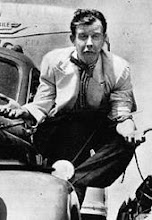I finished building my first amplifier yesterday. After a couple misplaced wires and some shoddy components blowing up (it wasn't my fault... honest!) I got this thing going and it sounds killer. For the amp class, all the students (and a few instructors) built the same amplifier from a kit sold by the Weber speaker company. Unfortunately, they stock some fairly cheap-o components with these particular kits, hence the blow ups: I had a filter cap and rectifier tube blow during the initial tests. Luckily, our instructors were ready for this and had better replacement parts on hand. This is pretty much as simple as tube amps get. The straight forward design allows for oodles of tone tweaking once the amp is completed. Swapping components out is a breeze and really opens up the possibility of dialing in a specific sound you're after. I've never really been one for geeking out on the subtle variances of vacuum tubes, swapping them out and comparing them; it just seemed like yet another black hole of endless tweaking in the world of guitar madness. But this simple amp allows for plenty of tinkering so maybe more of that will be in the future. Putting this amp together really makes you appreciate the stellar work of companies like Victoria or Blankenship. Their amps are flawless works of art. Open up the back circuit board of one of their amps and all the wires are immaculately soldered and arranged. The amp class was a lot of fun. I avoided getting electrocuted and now I have a pretty sweet lil' amp:

While the lacquer on my electric guitar cures over the next two weeks, all eyes are on the acoustics. Now that the body is all glued up, we are adding binding and the bottom wedge. The binding and wedge basically serve to hide the joinery between the wooden sides and the top & back. Basically, it cleanly brings the instrument together from an aesthetic point of view. Here's a couple shots of the work in progress: we use vacuum pumps to suspend the bodies of the acoustics while rough sanding the sides, making them smooth and perpendicular to the top & back prior to binding:

Yesterday we routed channels for the binding and purfling on the body. Below, Scotty routes his binding channels as instructor, Don, looks on to ensure a job well done:

Here's a shot of my acoustic body immediately after routing for binding and purfling. Purfling is an ornamental strip of thin material sandwiched below and/or inside the binding and the acoustic body. Besides hiding the joinery between the top, back and sides, the binding/purfling really frame the guitar's curves and gives the instrument a super clean look. Hopefully you can get a sense of the depth of the binding channel when looking at the top left of this image:

And the back:

Here's a shot of the bottom wedge as I fit it up. The wedge is another piece of rosewood (the same wood I'm using for the back and sides) with two thin pieces of maple tucked on either side that will eventually be mitered to match the rosewood/maple binding that will go around the top and back of the guitar... more on that as work progresses. While there are plenty of binding options to choose from, I kept it pretty simple and went with this simple setup so the maple purfling strips will give the guitar a clean pin striped look while the rosewood binding matches the back and sides.

And whadda ya know, I got home tonight and the good folks at Gretsch Discussion Pages/Tru-Arc Bridges mailed me a care package. Apparently they are producing 'official' Chet Atkins strings again and hooked me up with a couple free sets to check out... neato! Thanks Proteus!














1 comment:
man i love reading about this. grandpah never knew that so many technical terms could mean so much SOUND TONE and such and such. I want to build a taco that means this much to me, to you, and to the world. Poop can't come close.
Poop
Post a Comment